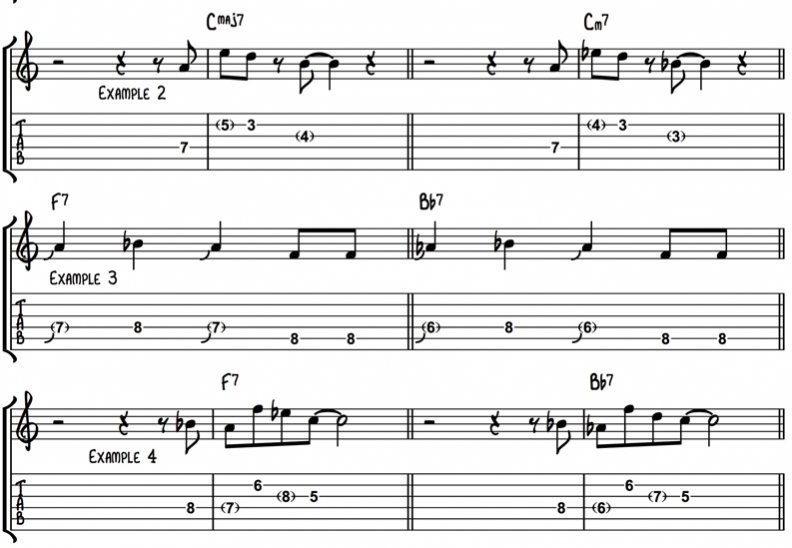Jazz Guitar Shed: Got a Motive?
Jazz Guitar Shed: Got a Motive?
Continuing last issue’s theme of music as a language, this time lets consider an improvised solo as being like a short story. Rather than have this story jump around randomly between many unrelated topics (“How to make a chocolate cake… the First World War… my grandad’s new hearing aid), let’s assume we’d like to tell one story with a central plot, e.g. “How I went to the shop to buy my new guitar.”
For our musical purposes, we’re going to relate this to a single melodic phrase or motif. What we want to be able to do is develop this motif in various ways, but have it running as a theme through most of the solo. First of all well try this over two chords – a Cmajor7 and a Cminor7 chord.
In the examples that follow I’ve put brackets around the relevant notes in the tablature. I’ll also put up a recording of the examples from this article in the Resources section of my website: www.aucklandguitarschool.co.nz.
Play a short phrase that fits over the Cmaj7 chord (Example 1).
 Then alter these notes as little as possible to fit the Cm7 chord. Where possible, keep the notes the same, otherwise try and move a very short distance (1 or 2 frets preferably) to a note that fits the new chord.
Then alter these notes as little as possible to fit the Cm7 chord. Where possible, keep the notes the same, otherwise try and move a very short distance (1 or 2 frets preferably) to a note that fits the new chord.
Cmaj7 contains the notes C, E, G, B (Root, 3, 5, 7) and Cm7 contains the notes C, Eb, G, Bb (Root, b3, 5, b7). So all we need to do is change the 3rd to fit the new chord.
 In Example 2, I played a phrase that included the 3rd and the major 7th (E and B) over the Cmaj7. To fit over Cm7, we’re going to alter these notes to Eb and Bb, giving us the b3rd and b7th of the chord.
In Example 2, I played a phrase that included the 3rd and the major 7th (E and B) over the Cmaj7. To fit over Cm7, we’re going to alter these notes to Eb and Bb, giving us the b3rd and b7th of the chord.
Now let’s try this over the first two chords of a blues in F.
In Example 3, I’ll play a phrase that contains the 3rd over the F7 (the A note). To fit the Bb7, I just alter that to Bb (the b7).
Finally, in Example 4 my F7 phrase contains A and Eb (3rd and b7th respectively). To fit Bb7 these become Ab (b7th) and D (3rd).
When you first start practising this concept, it’s important to keep your phrases short and limit the number of chords. As you get more comfortable with it, try the approach over longer progressions / a whole song (jazz standard etc). In time you’ll discover that youre playing more melodically, more coherently and that rather than frantically searching for new ideas as you solo, you’re making more musical sense through exploring a smaller number of ideas in depth. Have fun!
Dylan Kay is a professional guitarist and guitar teacher based in Auckland. He can be contacted through his website
www.aucklandguitarschool.nz
